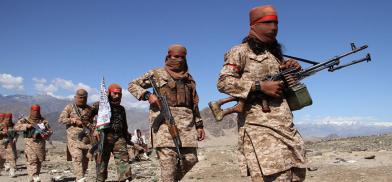Taliban rule in Afghanistan will be aligned with China
With Pakistan becoming the vassal state of China, China plans to extend the China-Pakistan Economic Corridor into Afghanistan, writes Lt Gen P. C. Katoch (Retd) for South Asia Monitor

In a recent incident, a doctor was stoned in north Afghanistan on June 13 for reportedly treating a female patient in an examining room without a chaperone. On May 12, terrorists attacked the maternity ward of Médecins Sans Frontières (MSF) hospital in Kabul killing 15, including 11 women and their unborn babies, in cold blood and injuring five. This shows the gruesome reality faced by the Afghan population.
Announcement of three-day ceasefire by Taliban commencing May 23 to celebrate Eid al-Fitr raised hopes of peaceful days ahead. On May 26, Afghan President Ashraf Ghani announced the release of another 900 Taliban prisoners. But on June 14, Afghanistan’s Interior Ministry spokesman Tariq Arian accused Taliban of launching 222 attacks in the previous week, killing or wounding 422 Afghan security personnel. Referring to bomb attacks in a Kabul mosque that killed two prayer leaders, Arian also accused the Taliban of targeting religious scholars to exert psychological pressure on the Afghan government. At least 42 civilians, including women and children, were also killed in attacks and 105 others wounded by the Taliban across 18 provinces.
The UN mission in Afghanistan released a report on June 21 raising concerns about 15 attacks on health workers and healthcare facilities during the coronavirus pandemic, attributing responsibility of the majority of these attacks to the Taliban. A day later on June 22, media reports revealed the Taliban had kidnapped 60 civilians in the Daikundi province of Central Afghanistan over the past week. Later 26 hostages, mostly women, and children were released. Taliban has denied all attacks, killings, and abductions reported by the Afghan government, the United Nations, and the media. However, the Taliban apparently want to keep the Afghan government under sustained pressure.
Whither intra-Afghan dialogue?
President Ghani had earlier signed a power-sharing deal with his political rival Abdullah Abdullah assigning him responsibility for peace negotiations with the Taliban. The latter now heads the High Council for National Reconciliation (HCNR). The Afghan government and Taliban have agreed to Doha in Qatar as the venue for intra-Afghan dialogue but no date has been announced to begin talks. Taliban maintains for talks to begin all 5,000 Taliban prisoners must be released. The US-Taliban agreement of February 29 required Afghan government to release up to 5,000 Taliban prisoners and Taliban to release about 1,000 Afghan security forces. The Afghan government has apprehensions that releasing 14 top Taliban commanders would increase violence further.
Abdullah Abdullah, a Tajik, has a tough task ahead. As and when the dialogue begins a sticking point will be women’s rights, including freedom of speech and education granted under Afghanistan’s Constitution adopted in 2004. This will likely be opposed by the Taliban who follow orthodox Islamic laws. The bigger question is whether Afghanistan will remain a democratic republic at the end of it all or become an Islamic emirate under Sharia that the Taliban want. Which side will cede how much is difficult to predict. Complexities of the dialogue suggest it may prolong over months without complete reconciliation.
China's geostrategic outreach
Statistics show the US dropped more bombs in Afghanistan during 2019 than any calendar year but the Taliban still remains strong. They would like to assume full control of Afghanistan. The US needs to acknowledge that Taliban promise to not permit territory of Afghanistan for terrorist attacks against America and American interests are Gwautopian. The conversation will happen once US troops exit Afghanistan. Not only are Taliban supported and armed by China and Pakistan, China’s strategic interests in South Asia, including Afghanistan needs to be borne in mind.
In the early 2000s, British sources had contended that Chinese specialists were seen training Taliban fighters in the use of IR SAMs. This was supported by a May 13, 2008, classified US document released by WikiLeaks. Subsequently, Aviation Week dated December 23, 2010, reported that Chinese military officials were advising the Taliban how to fight the NATO-led ISAF. Taliban has been using Chinese weapons US-NATO forces in Afghanistan, with China contending no international norms have been broken. China-Taliban links have remained strong.
With Pakistan becoming the vassal state of China, China plans to extend the China-Pakistan Economic Corridor into Afghanistan. Pakistan has permitted Afghan traders to use Gwadar port. China eyes the US$2-3 trillion mineral reserves in Afghanistan where it has been drilling commercial oil since 2012. Taliban rule in Afghanistan will be fully aligned with China. This together with the Chinese presence in Iran and Iran’s recent announcement of establishing a naval base in the Indian Ocean by March 2021 will greatly boost China’s geostrategic reach.
(The author is an Indian Army veteran. The views expressed are personal. He can be contacted at prakashkatoch7@gmail.com)









Post a Comment